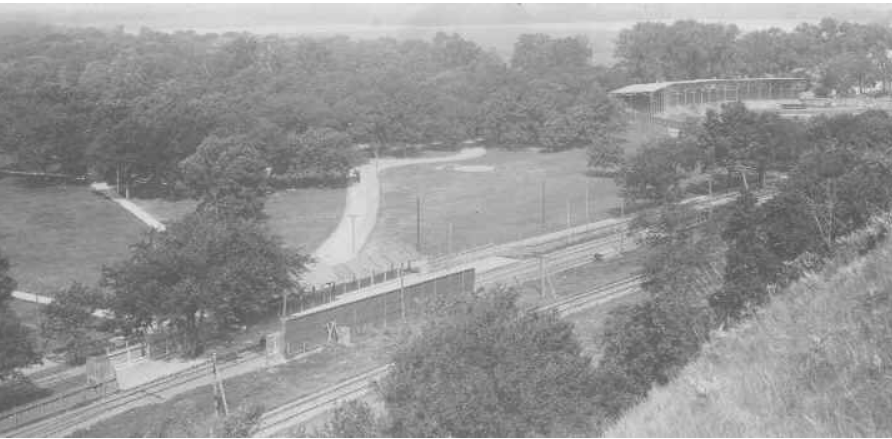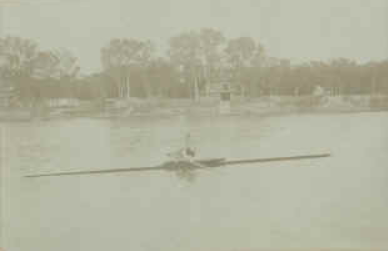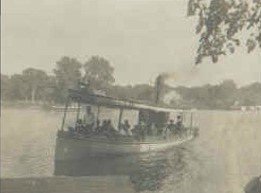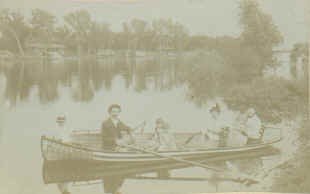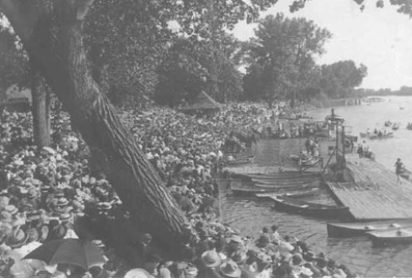Riverside Park Area
The Riverside Park area changed hands many times in the early years of the city. Theophile Bruguier owned the area for over twenty years before selling it around 1880. It was finally purchased in 1890 by the Riverside Park Land Company. Owners included: James Booge, John Hornick, John Peirce, E. C. Peters, and James Peavey. The intent of the company was to develop the land for houses, factories, and railway branch lines. Since many of these men also owned the City and Suburban Railway Company, the prospects for success seemed certain.
The Financial Panic of 1893 changed all their plans. However, by the late 1890s through the 1920s, Riverside Park. This part of the city was a major attraction for the region. From the first amusement park (complete with a roller coaster), to country clubs, picnic grounds, baseball fields, racing tracks, and fairgrounds, Riverside had it all.
The main attraction to the area was the Sioux River. Unlike the channelized river of today, the old Sioux was a slow moving, picturesque river up to two hundred yards in width. Because people had no air conditioning, being around water was a definite summer attraction.
You could swim, canoe, row, or travel by steamboat up and down the quiet, tree-lined river. People would ride the street car to the area to picnic or camp. Another possibility for recreation was to join one of the five boat and country clubs which lined the river's shore. These clubs provided more than just water sports. There were rooms for playing cards, shooting pool, reading, and dances.
More than 20,000 people came to watch the Ringling Brothers Circus bath their elephants in the Sioux River.
The Interstate Fair, which began in 1903 and continued until 1926 was another major attraction. Under the leadership of F. L. Eaton the fair became the largest private fair in the nation. Farmers and ranchers from the tri-state area brought their livestock and crops to compete in contests. 4-H competition among the children was keen.
The fair included the usual exhibits and midway. But they also had a two-mile track where all kinds of races were held. Early automobile races, horse races, bicycle races, and even fire truck races drew large crowds to the track.
In 1905, land owned by the Sioux City Traction Company was leased for the purpose of building the Commercial Men's Boat Club. This was one of the last boat clubs to be formed in the area. By 1911, the club had become one of the most popular among the local citizens and traveling men. Unfortunately a fire burned the club to the ground. The new building had a new name: Shore Acres Boat Club.
The Riverside area was also home to the city's most successful brick plant. The Sioux City Brick and Tile plant produced 100 million bricks and tiles annually. The plant was the second largest employer in the city for many years.
Other large employers in the Riverside area included the Sioux City Vinegar and Pickling Works and the Chicago, Milwaukee, St. Paul and Pacific Railroad repair shops.
Bruguier’s Cabin, the oldest structure in Sioux City, was eventually moved to Riverside Park. It serves as the clubhouse for the Girls of ‘68 and tours are given to local schools. In addition, Riverside Park is now home to the Sioux City Community Theatre, a municipal pool, and other recreational amenities.

